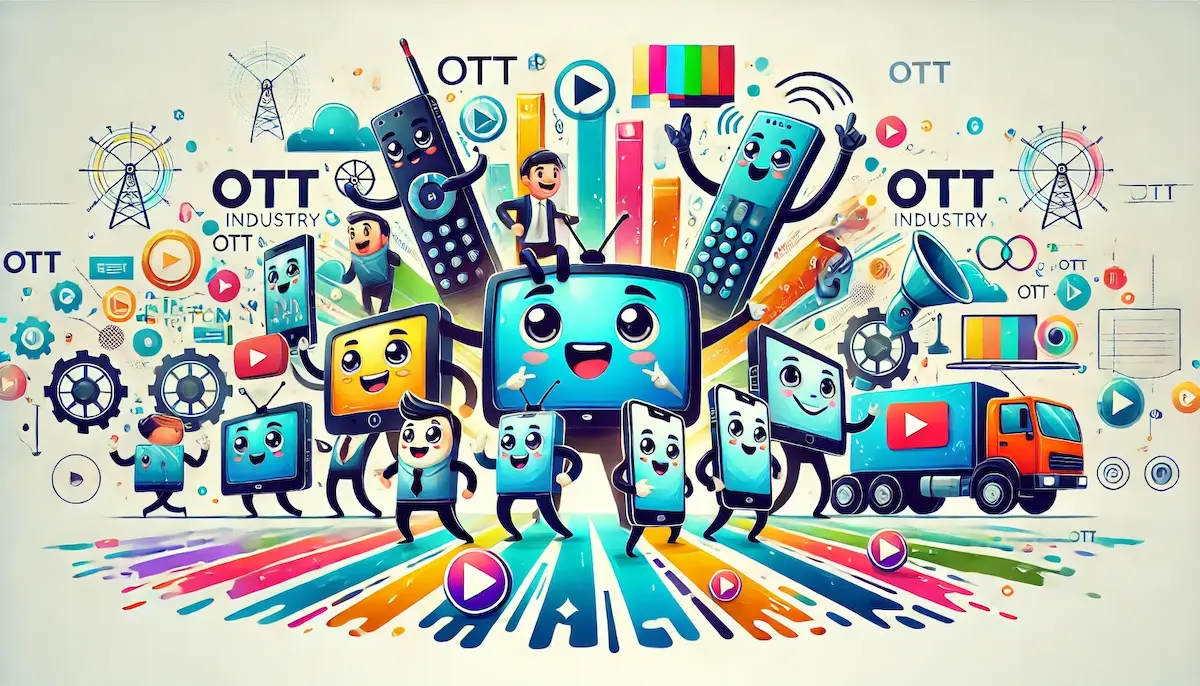The OTT (over-the-top) industry has transformed how we access and consume media, revolutionizing the entertainment landscape. From movies and TV shows to live sports and news, OTT services deliver content directly to viewers via the internet, bypassing traditional cable and satellite television providers. This shift has led to a dynamic and rapidly growing industry that is reshaping our viewing habits and preferences.
What is the OTT Industry?
The OTT industry encompasses services that stream media content over the internet without the need for a traditional distribution network. These services offer a vast array of content, including video on demand (VOD), live streaming, and audio streaming. The term “over-the-top” signifies the delivery of content directly to consumers through high-speed internet connections, making it accessible on a variety of devices like smartphones, tablets, smart TVs, and computers.
Key Players in the OTT Industry
Several major players dominate the OTT industry, each offering unique content and features:
- Netflix: A pioneer in the OTT space, Netflix provides a vast library of movies, TV series, documentaries, and original content. It is known for its user-friendly interface and personalized recommendations.
- Amazon Prime Video: Included with an Amazon Prime subscription, this service offers a wide range of movies, TV shows, and exclusive originals like “The Boys” and “The Marvelous Mrs. Maisel.”
- Disney+: Featuring content from Disney, Pixar, Marvel, Star Wars, and National Geographic, Disney+ has become a favorite among families and fans of these franchises.
- Hulu: Known for its extensive catalog of TV shows and next-day access to current episodes, Hulu also offers live TV streaming and original programming.
- HBO Max: Combining HBO’s premium content with additional movies, series, and originals, HBO Max delivers a rich viewing experience.
- Apple TV+: Apple’s streaming service focuses on original content, including critically acclaimed series like “Ted Lasso” and “The Morning Show.”
Business Models in the OTT Industry
The OTT industry employs various business models to monetize content:
- Subscription-Based (SVOD): Viewers pay a monthly or annual fee to access a library of content. Examples include Netflix, Disney+, and Amazon Prime Video.
- Ad-Supported (AVOD): Content is free to watch but includes advertisements. Examples include YouTube and Tubi.
- Transactional (TVOD): Viewers pay for individual movies or episodes. Examples include iTunes and Google Play Movies.
- Hybrid Models: Some platforms use a combination of these models, offering both subscription tiers and ad-supported content. Examples include Hulu and Peacock.
Impact on Traditional Media
The rise of the OTT industry has significantly impacted traditional media:
- Cord-Cutting: Many consumers are opting to cancel their traditional cable or satellite subscriptions in favor of more flexible and cost-effective OTT services.
- Content Creation: The demand for high-quality content has led to increased investment in original programming by OTT platforms, often surpassing traditional studios in terms of production quality and creativity.
- Global Reach: OTT services offer a global platform for content creators, allowing them to reach audiences worldwide without the constraints of regional broadcasting regulations.
Challenges and Opportunities
The OTT industry faces several challenges and opportunities as it continues to grow:
- Competition: With numerous platforms vying for viewers’ attention, content quality and exclusivity are critical for retaining subscribers.
- Bandwidth and Infrastructure: Reliable high-speed internet is essential for streaming services, and providers must ensure their infrastructure can handle increasing demand.
- Regulatory Issues: As the industry evolves, regulatory frameworks must adapt to address issues such as content licensing, censorship, and data privacy.
- Technological Advancements: Innovations like 5G, artificial intelligence, and virtual reality offer new possibilities for content delivery and user engagement.
The Future of the OTT Industry
The future of the OTT industry looks promising, with continuous advancements in technology and shifting consumer preferences driving its evolution. Expect more immersive viewing experiences, increased interactivity, and a broader range of content as the industry continues to innovate and expand.
Blockfine thanks you for reading and hopes you found this article helpful.
